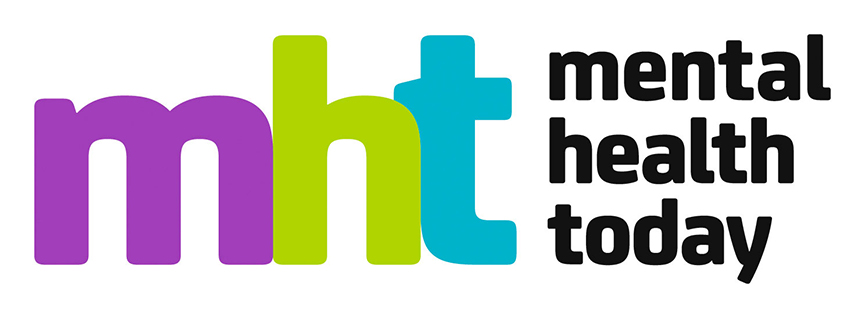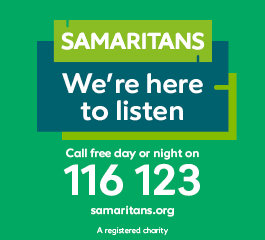‘Borderline Personality Disorder' - it’s time to change the story
05 January 2018
When people with Borderline Personality Disorder (BPD) present themselves, or, just as frequently, are presented to mental health professionals, it’s not uncommon to see them as a cluster of symptoms that confirm that diagnosis.
"It’s time to ask, ‘What happened to you?’ only then will we get closer to the real story."
All being well, and if resources allow, professionals concerned respond accordingly - with chemical and talking therapies - more often than not, responding to the presenting problems.
And there’s the flaw. By asking the all too obvious question, ‘What’s wrong with you?’ practitioners are often missing the key part of the story.
BPD, in my experience, is a normal response to abnormal circumstances. Defence mechanisms emerge to protect the mind against often horrible situations.
It’s time to ask, ‘What happened to you?’ only then will we get closer to the real story.
In Walk a Mile: Tales of a Wandering Loon, I start that conversation.
What’s WRONG with you?!
During the festive times just passed, it’s not hard to imagine someone having a few too many at the Christmas party, having a bit of a skid on the Yuletide ice and appearing in A & E with a chipped/ sprained/ broken *insert joint/ bone of your choice*
This person will be met with a wry, ‘Oh you are a big silly’ kind of half smile as they’re treated & waved off with a ‘try to be a bit more careful in future’
Imagine another person - very similar to our partygoer - let’s call them, ‘Chris’ - yeah, ok, it’s me...
Chris has a condition labelled as Emotionally Unstable Personality Disorder (EUPD) or, as it’s more commonly known, Borderline Personality Disorder (BPD)
It’s still Christmas Time and Chris has a similar injury to generic party friend ‘x’.
Chris was finding this particular time of year difficult - with BPD, emotions can be unruly at the best of times - with ‘happy holidays’ thrown into the mix, he finds himself pulled into a vortex of self hatred, guilt, anger, fear and dissociative fugue, whilst replaying awful past life events of childhood grief, abuse and neglect over and over again. Hallucinating, he’s not sure what’s real or imagined...he...I had to break out of...whatever this is...
I punched the wall...hard. I knew immediately I’d broken two knuckles on my right hand. The severe pain brought the maelstrom of emotions to an abrupt halt.
In an ideal world, I’d have hopped on the bus/ called for a taxi/ got an ambulance to take me to accident and emergency...but reality bit.
Perceptions
I remembered talking to a psychotherapist about my self harming a while back...
‘That’s not very intelligent’, he’d said.
Followed by a steady cascade of the experiences of friends and acquaintances in similar circumstances...
‘We’ve got real patients who haven’t deliberately injured themselves...’
‘So you want to experience pain...?’ *dresses wound with no local anaesthetic*
‘There’s no cure for BPD...why don’t you just...go home...(without looking at the presenting physical problems)...have a hot bath...
There’s more - but that’s enough to give you a flavour as to why I don’t take my broken hand to...well, anywhere really, because the anticipated psychological pain of prejudice and negative judgement greatly outweighed the physical discomfort...
'Shopping list' of symptoms
It’s easy for mental health practitioners, carers, friends, family and folk with BPD to stop at the shopping list of symptoms that BPD has to offer.
But that would be very short sighted. I’ve recently started using Neil Thompson’s excellent P(ersonal) C(ultural) S(tructural) model of discrimination as a more insightful way of exploring BPD and other mental health problems.
Personal
It’s very easy to get caught up in the personal - the diagnosis - the symptoms - the treatment - possibly the medical model - and the recovery of mental ill health.
The ‘What’s WRONG with you?’ model.
Hopefully, I’m beginning to show, having stolen some ideas from a wiser person than me, that this is just one third of the story...
Cultural
I’ve been fortunate enough to receive some rather fabulous group psychotherapy - a group where we developed our own positive micro culture that acted as a bit of a launchpad for me to explore some rather lovely things.
Conversely, a negative culture, where negative thoughts and beliefs are not only allowed to grow - but actively propagated within a group - can have devastating effects.
In my own little world of social work and life with a mental health problem, I’ve heard phrases like,
‘BPD - that’s just a dustbin diagnosis...’
‘You’re too nice to have BPD...’
‘Borderlines are manipulative...liars...aggressive...dangerous...’
‘Don’t meet up with that peer group of people with BPD...these are very dangerous people...’
Structural
These are laws, policies and guidelines that have direct or indirect effects on many of the citizens of our fair country.
Austerity is one such policy - a hydra with many heads.
For example, I’ve recently been involved in the #42Days campaign - a 42 day hunger strike to raise awareness of the unacceptable 42 day delay in payment for people who apply for Universal Credit, which has a Draconian system of benefit sanctions woven into it - punishing people, without due legal process, for the heinous crimes of not filling out a form exactly or missing a meeting - by stopping their money for anything between 3 days and 3 years.
We’ve recently heard that applicants for Universal Credit are 20 times more likely to be sanctioned than their predecessors.
Throw the mainstream media into the mix, with recent headlines like ‘A Nation Hooked on Happy Pills’ (Daily Mail 29th December 2017) and we’ve got a perfect storm.
The BMJ tell us that 120,000 people have died prematurely since the implementation of austerity measures in the U.K.
It’s so very easy to get lost in the personal, the, ‘What’s wrong with you?’ perspective of mental ill health.
Without considering the impact of cultural and structural factors, we are only getting a third of the conversation.
Together, through sharing our realities, we can change the story.
Show your support for what you’ve read today. Enable us to keep finding and sharing the ideas that will better shape tomorrow’s mental health care.
Donation Information



Comments
Write a Comment
Comment Submitted